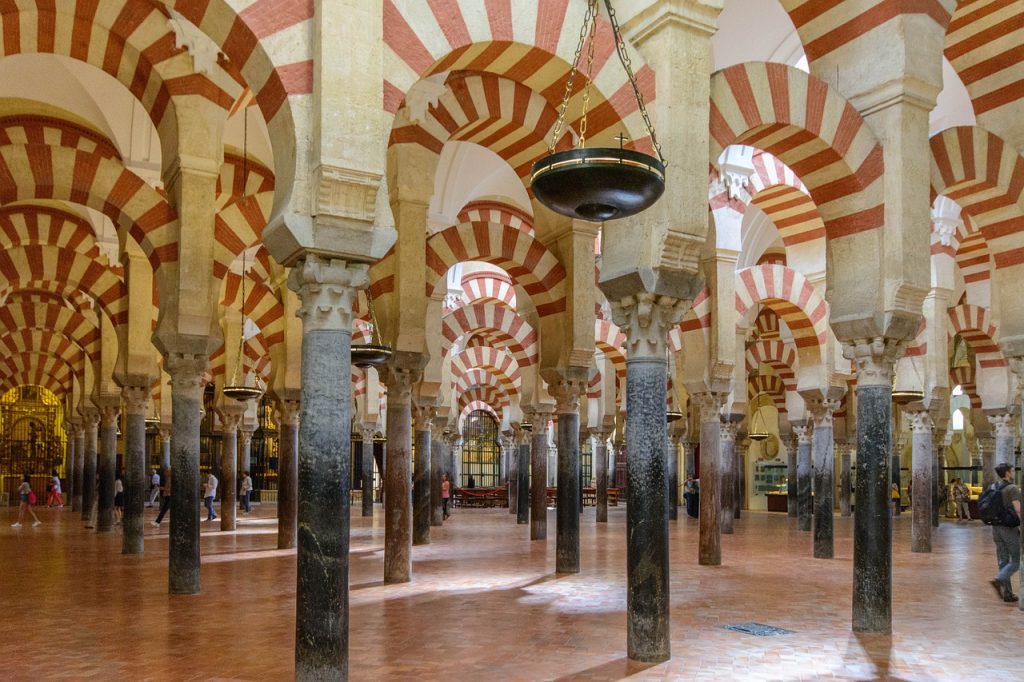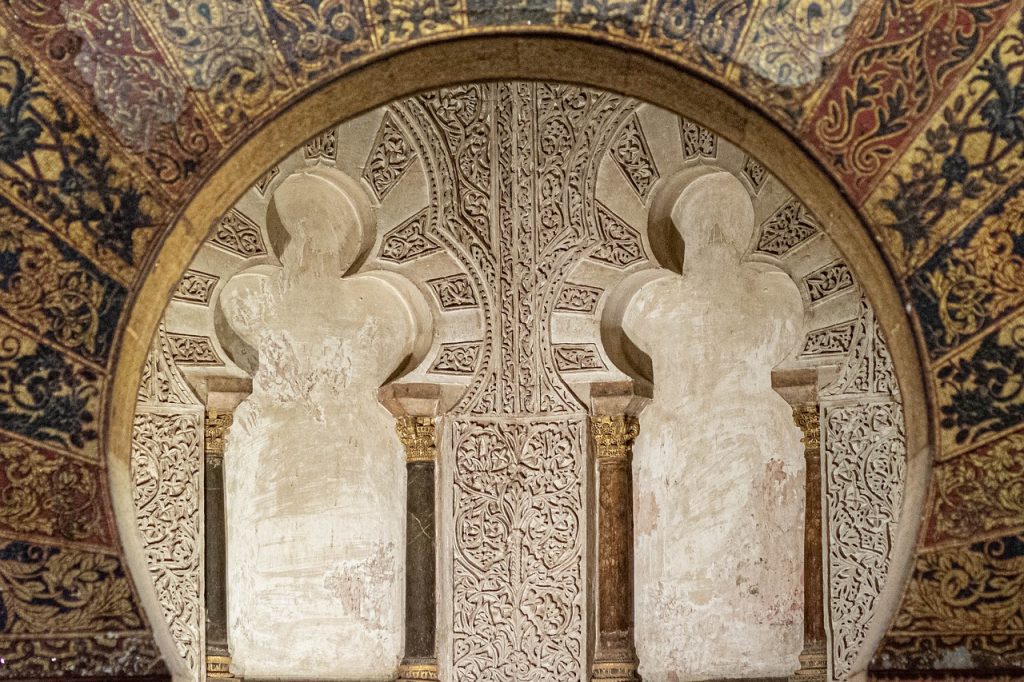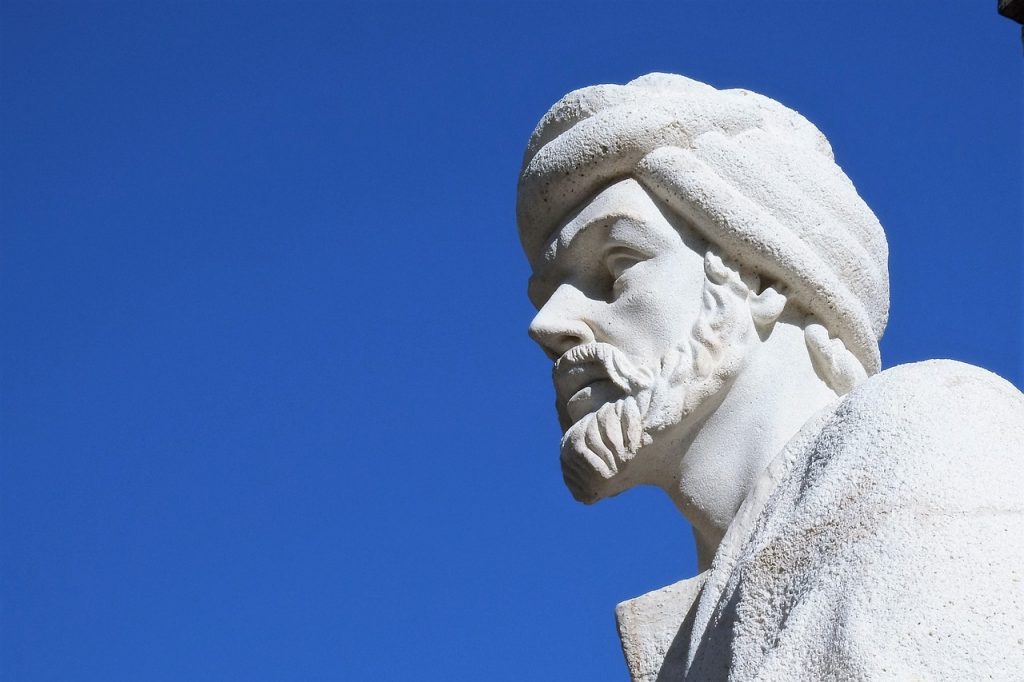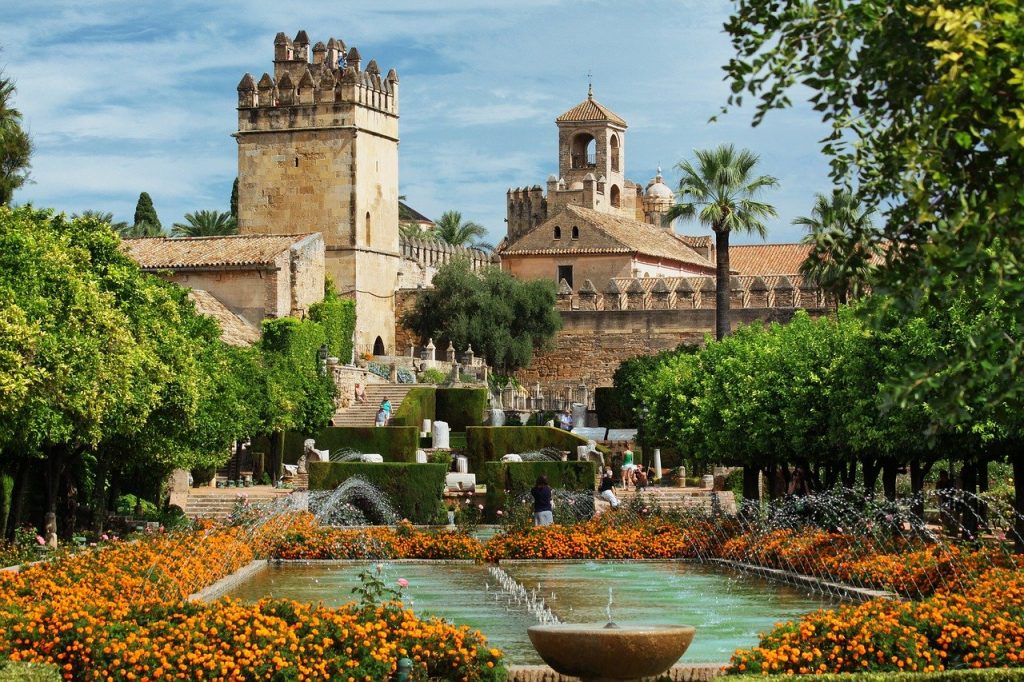The Moors occupied Córdoba from 711AD until Ferdinand III of Castile entered the city in June 1236. During the 10th century, Córdoba was one of the most culturally and politically advanced cities in the world. InSpain.news looks at Córdoba’s Moorish history.
The Visigoth rule of Córdoba lasted from the sixth century until the occupation of the Moors in 711AD. Forty-five years later, Córdoba was the capital of Islamic Spain (756AD), when the Syrian, exiled prince Abd Al-Rahman I declared himself ruler of Iberian Muslims.
The Mezquita

Rahman I founded the Mezquita on the site of a Visigoth church. The initial construction only took a year, perhaps helped by use of Roman and Visigoth structures. However, it was to be almost two hundred years before the structure as it’s now seen was completed following numerous additions by subsequent rulers. The iconic interior, with 856 double arches was modelled on Jerusalem’s Dome of the Rock.
Mosques were normally aligned with the qibla, the direction of prayer, which is theoretically the direction of Mecca. From Cordoba, Mecca is to the east-southeast, but the Great Mosque of Cordoba has an orientation more towards the south.
In the 10th century Abd ar-Rahman III declared a new Caliphate in al-Andalus. As part of his various projects, he enlarged the courtyard of the Great Mosque and built its first true minaret, starting in 951-952. The minaret was 47 meters high and had a square base measuring 8.5 meters per side
The courtyard of the mosque was planted with fruit trees from as early as 808, according to the jurist Ibn Sahl. Now, it is resplendent with oranges.
Further expansion

Abd ar Rahman III’s son and successor, Al-Hakam II, was involved in his father’s architectural projects. During his own reign, starting in 961, he further expanded the mosque’s prayer hall. He also extended the hall 45 meters to the south by adding 12 more bays (arches). This expansion is responsible for some of the mosque’s most significant architectural flourishes and innovations.
The mosque’s last significant expansion under Muslim rule was by Al-Mansur (Almanzor), the autocratic vizier of Caliph Hisham II, in 987-988. Al-Mansur extended the mosque laterally towards the east, extending both the courtyard and the prayer hall by 47.76 meters and adding eight naves to the mosque.
Al-Mansur also famously looted the bells of the Cathedral of Santiago de Compostela. It is reported he ordered them melted down and turned into chandeliers for the mosque. However, other sources state that following the reconquest by Ferdinand III, the bells made their way home to Santiago de Compostela.
A leading light in the west

When Abdir Al-Rahman III became ruler of Moorish Spain in 929AD, Córdoba was Europe’s largest and most advanced city.
The three main cultures – Muslims, Jews and Christians – lived and worked (peaceably for the most part) side-by-side. The leading intellectuals carried out pioneering work in medicine, astronomy and philosophy.
The university in Córdoba became the most celebrated in the world. Christian students from all Western Europe, as well as Muslim students attended, with ancient Greek texts translated into Arabic, Latin and Hebrew. The university produced one hundred and fifty authors.
During the reign of al-Hakam II, the royal library in the Alcazar possessed an estimated 500,000 volumes. This was the most extensive library in the west. Yet, there were over 80 libraries and institutions of learning within the Caliphate.
In 1000AD, Córdoba had a population of around 400,000 inhabitants. There was a prosperous economy; with manufactured goods including leather, metal work, glazed tiles and textiles. In addition, there was agricultural produce including a range of fruits, vegetables, herbs and spices, and materials such as cotton, flax and silk.
The reactionary chancellor Al-Mansur effectively took control of Al-Andalus in 976. Al-Mansur burned many books on philosophy to please the Muslim clergy. Following his death in 1002, there was civil war and uprisings. These hastened Córdoba’s decline. Yet, the 12th century still delivered two important philosophers: the Muslim Averroes (1126-98) and the Jewish Maimonides (1138-1204).
Córdoba’s decline
The in-fighting among the different Muslim factions was to seal Córdoba’s fate. In 1070, forces from the Taifa of Seville entered Córdoba to help in the defence of the city, that had been besieged by Al-Mamun, ruler of Toledo. However, they took control and expelled the last ruler of the taifa of Córdoba, Abd-Al Malik.
Al-Mamun did not cease in his efforts to take the city, and triumphantly entered the city on 15 February 1075, only to die there barely five months later; apparently poisoned. The Almoravids next seized Córdoba by force in March 1091.
Sworn enemies of the almohads, Ibn Mardanīš (the “Wolf King”) and his stepfather Ibrahim Ibn Hamusk allied with Alfonso VIII of Castile and laid siege to Córdoba from 1158 to 1160, ravaging the surrounding areas but failing to take the city.
Almohad caliph Abdallah al-Adil moved the governor Al-Bayyasi from Seville to Córdoba in 1224, only to see the latter became independent from Caliphal rule.
Al-Bayyasi asked Ferdinand III of Castile for help only to see Córdoba revolt against him. Years later, in 1229, the city submitted to the authority of Ibn Hud, later disavowing him (1233), joining instead the territories under Muhammad Ibn al-Aḥmar, ruler of Arjona and soon-to-be emir of Granada.
The Christian reconquista

After a lengthy siege, King Ferdinand III captured Córdoba in 1236 and incorporated it into Christian Spain.
Ferdinand immediately consecrated the mosque as a Catholic church. Thankfully, he didn’t destroy the original building. Spain’s Christian rulers made various additions to the Mezquita throughout the centuries. This culminated in the construction of a Gothic cathedral on top of the prayer hall in the mid-16th century, on the orders of Holy Roman Emperor and King of Spain Charles V.
In 1328, on the orders of King Alfonso XI, construction of the grand Alcázar de los Reyes Cristianos (The Castle of the Catholic Kings) commenced, on the site of the original Moorish fortress.
Related post: Córdoba’s patio festival


